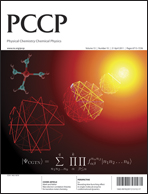Gas phase studies of biological molecules provide structural and dynamical information on isolated systems. The lack of inter- or intra-molecular interactions facilitates the interpretation of the experimental results through theoretical calculations, and constitutes an informative complement to the condensed phase. However advances in the field are partially hindered by the difficulty of vaporising these systems, most of which are thermally unstable. In this work we present a newly developed aerosol mass thermodesorption setup, which has been coupled to a Velocity Map Imaging (VMI) analyzer operated in coincidence with a Wiley–McLaren Time of Flight spectrometer, using synchrotron radiation as a single photon ionization source. Although it has been previously demonstrated that thermolabile molecules such as amino acids can be produced intact by the aerosol vaporisation technique, we show how its non-trivial coupling to a VMI analyzer plus the use of electron/ion coincidences greatly improves the concept in terms of the amount of spectroscopic and dynamic information that can be extracted. In this manner, we report on the valence shell ionization of two amino acids, tryptophan and phenylalanine, for which threshold photoelectron spectra have been recorded within the first 3 eV above the first ionization energy using synchrotron radiation emitted from the DESIRS beamline located at SOLEIL in France. Their adiabatic ionization energies (IEs) have been measured at 7.40 ± 0.05 and 8.65 ± 0.02 eV, respectively, and their spectra analyzed using existing theoretical data from the literature. The IE values agree well with previously published ones, but are given here with a considerably reduced uncertainty by up to a factor of 5. The photostability of both amino acids is also described in detail, through the measurement of the state-selected fragmentation pathways via the use of threshold electron/ion coincidences (TPEPICO), with appearance energies for the different photofragments given for the vaporization temperatures studied, in correlation with the different molecular orbitals involved as identified from the Threshold Photoelectron Spectra (TPES).

You have access to this article
 Please wait while we load your content...
Something went wrong. Try again?
Please wait while we load your content...
Something went wrong. Try again?


 Please wait while we load your content...
Please wait while we load your content...